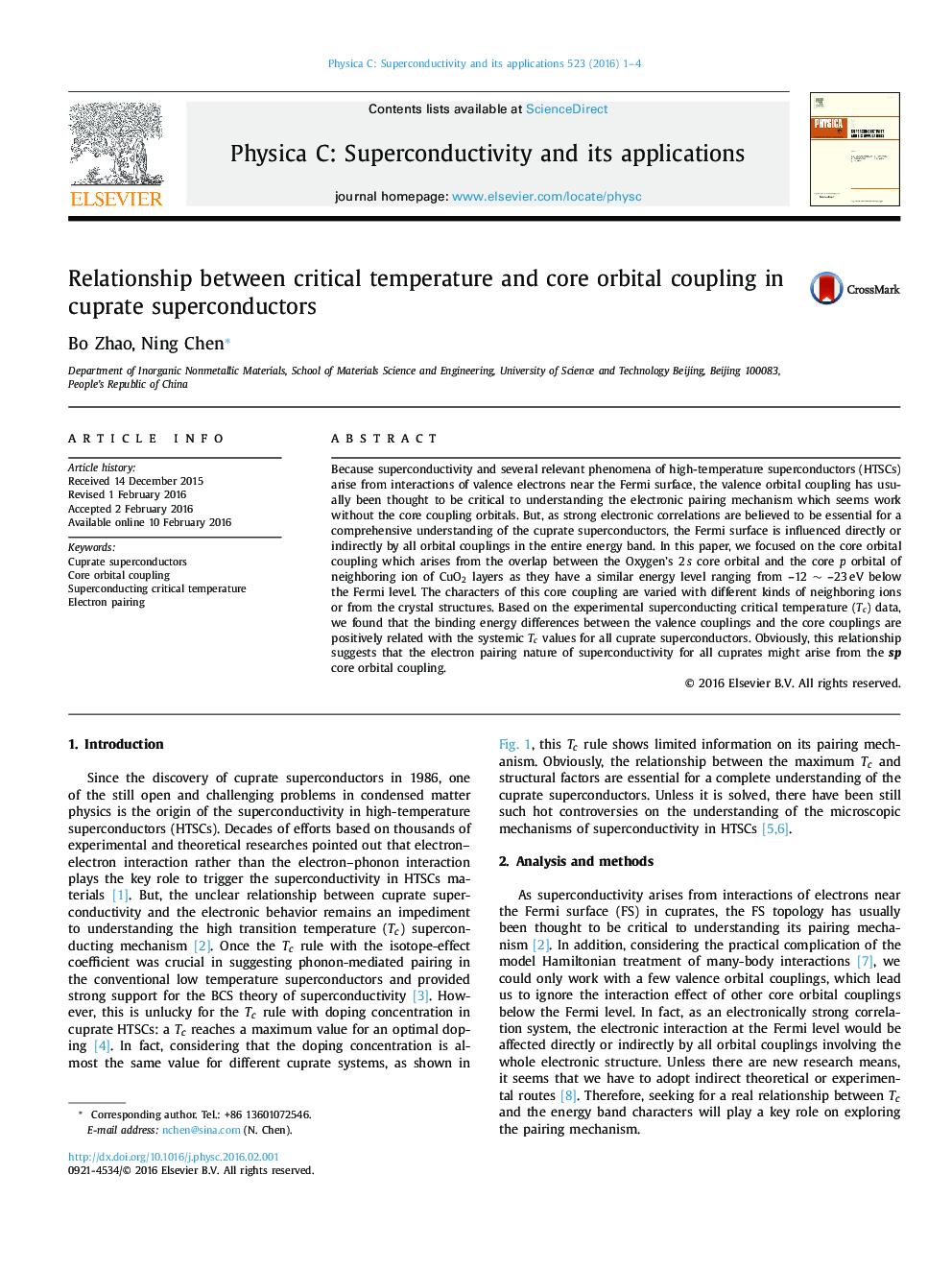| Article ID | Journal | Published Year | Pages | File Type |
|---|---|---|---|---|
| 1817383 | Physica C: Superconductivity and its Applications | 2016 | 4 Pages |
•In this paper we found a new relationship between critical temperature and core orbital coupling in cuprate superconductors. In other words, we studied the core orbital couplings which few scientists paid attention to in cuprate superconductors and obtained a new Tc relationship.•The binding energy differences between the valence couplings and the core couplings are positively related with the systemic Tc values for all cuprate superconductors. This new relationship tells us that we should focus on not only the valence couplings but also the core couplings.•The new relationship seems very important and helpful for us to study the pairing nature of high- Tc superconductivity and seek superconductors with higher Tc.
Because superconductivity and several relevant phenomena of high-temperature superconductors (HTSCs) arise from interactions of valence electrons near the Fermi surface, the valence orbital coupling has usually been thought to be critical to understanding the electronic pairing mechanism which seems work without the core coupling orbitals. But, as strong electronic correlations are believed to be essential for a comprehensive understanding of the cuprate superconductors, the Fermi surface is influenced directly or indirectly by all orbital couplings in the entire energy band. In this paper, we focused on the core orbital coupling which arises from the overlap between the Oxygen's 2 s core orbital and the core p orbital of neighboring ion of CuO2 layers as they have a similar energy level ranging from –12 ∼ –23 eV below the Fermi level. The characters of this core coupling are varied with different kinds of neighboring ions or from the crystal structures. Based on the experimental superconducting critical temperature (Tc) data, we found that the binding energy differences between the valence couplings and the core couplings are positively related with the systemic Tc values for all cuprate superconductors. Obviously, this relationship suggests that the electron pairing nature of superconductivity for all cuprates might arise from the sp core orbital coupling.
